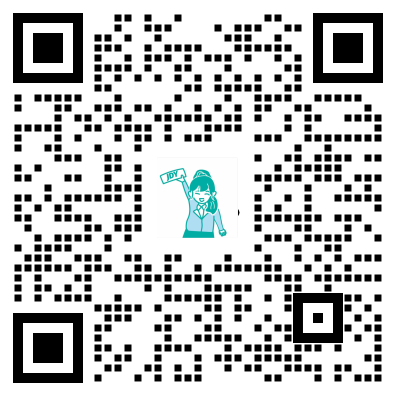
工程项目管理的英文版可以写成:Engineering Project Management。这个词汇不仅涵盖了工程项目的各个方面,还可以有效地传达出管理过程中的复杂性和专业性。例如,在大规模基础设施项目中,项目管理不仅包括时间和资源的管理,还需要考虑风险评估、质量控制以及团队协调等多个方面。通过有效的工程项目管理,可以确保项目按时、按预算完成,同时达到预期的质量标准。
一、定义与基本概念
工程项目管理(Engineering Project Management)是指在工程项目生命周期内,通过科学的管理方法和技术手段,对项目的目标、资源、时间、成本和风险等进行系统化的规划、组织、协调和控制,以实现项目预定目标的过程。该过程包括项目启动、项目规划、项目执行、项目监控和项目收尾五个阶段。每个阶段都有其特定的任务和目标,并且在实际操作中,各阶段之间相互交叉和影响。
二、项目启动
项目启动是工程项目管理的第一个阶段,主要任务是明确项目的目标和范围,并确定项目的主要干系人。项目启动阶段的核心文档是项目章程,它通常包括项目的背景、目标、范围、主要干系人、时间表和初步的预算。项目章程是项目管理的基础文件,它为后续的项目规划和执行提供了依据。在项目启动阶段,还需要组建项目团队,并确定项目的初步结构和职责分工。
三、项目规划
项目规划是工程项目管理的核心阶段之一,通过详细的规划可以确保项目的各项活动有序进行。项目规划主要包括范围管理、时间管理、成本管理、质量管理、风险管理和沟通管理等方面。在范围管理中,需要明确项目的工作范围,并通过工作分解结构(WBS)将项目分解为可管理的小任务。在时间管理中,需要制定详细的项目进度计划,使用甘特图或关键路径法(CPM)等工具进行进度控制。在成本管理中,需要制定项目预算,并通过成本估算和成本控制等手段,确保项目在预算范围内进行。
四、项目执行
项目执行阶段是将项目规划转化为实际成果的过程,这个阶段的主要任务是完成项目的各项活动,并确保项目按计划进行。项目执行过程中需要进行有效的沟通和协调,确保项目团队和干系人之间的信息传递顺畅。项目经理需要定期召开项目会议,跟踪项目进度,解决项目中出现的问题。此外,项目执行阶段还需要进行质量控制,确保项目成果符合预定的质量标准。通过质量保证和质量控制等手段,可以及时发现并纠正项目中的质量问题。
五、项目监控
项目监控是贯穿项目生命周期的一个重要阶段,主要任务是跟踪和监督项目进展,确保项目按计划进行。项目监控包括进度监控、成本监控、质量监控和风险监控等方面。在进度监控中,需要定期更新项目进度计划,使用偏差分析和挣值管理等工具,评估项目进展情况。在成本监控中,需要定期审核项目支出,确保项目在预算范围内进行。在质量监控中,需要进行质量审计和检查,确保项目成果符合质量标准。在风险监控中,需要定期评估项目风险,并采取相应的风险应对措施。
六、项目收尾
项目收尾是工程项目管理的最后一个阶段,主要任务是完成项目的各项活动,并将项目成果交付给客户或干系人。项目收尾阶段需要进行项目验收,确保项目成果符合预定的目标和质量标准。在项目收尾阶段,还需要进行项目总结,编写项目报告,总结项目的经验教训,为未来的项目提供参考。此外,还需要进行项目团队的解散和项目档案的整理,确保项目的各项资料得到妥善保存。
七、工具与技术
在工程项目管理中,使用合适的工具和技术可以大大提高项目管理的效率和效果。常用的项目管理工具和技术包括项目管理软件、甘特图、关键路径法(CPM)、挣值管理(EVM)、风险管理工具等。项目管理软件可以帮助项目经理进行项目规划、进度跟踪、资源分配和沟通协调。甘特图是一种直观的项目进度图,可以清晰地展示项目的各项活动及其时间安排。关键路径法(CPM)是一种用于项目进度管理的技术,可以帮助项目经理确定项目的关键路径,识别和管理项目中的关键任务。挣值管理(EVM)是一种项目绩效评估工具,可以通过比较计划值、实际值和挣值,评估项目的进展情况和绩效。风险管理工具可以帮助项目经理识别、评估和应对项目中的风险,确保项目的顺利进行。
八、项目管理的挑战与应对策略
在实际的工程项目管理中,项目经理会面临各种挑战,这些挑战可能来自于项目内部或外部。常见的项目管理挑战包括范围变更、时间延误、成本超支、质量问题和风险管理等。针对范围变更,项目经理可以通过严格的变更控制流程,确保变更的合理性和可控性。针对时间延误,项目经理可以通过制定详细的进度计划,并定期跟踪项目进展,及时调整项目计划。针对成本超支,项目经理可以通过制定详细的预算,并定期审核项目支出,确保项目在预算范围内进行。针对质量问题,项目经理可以通过实施质量控制和质量保证措施,确保项目成果符合预定的质量标准。针对风险管理,项目经理可以通过定期评估项目风险,制定风险应对计划,并在项目执行过程中及时采取风险应对措施。
九、成功案例分析
在工程项目管理领域,有许多成功的案例可以供项目经理参考。这些成功案例通常具有以下几个特点:明确的项目目标、详细的项目规划、高效的沟通协调、严格的质量控制和有效的风险管理。例如,在某大型基础设施项目中,项目团队通过详细的项目规划和高效的沟通协调,确保项目按时、按预算完成,并达到了预期的质量标准。在项目执行过程中,项目团队通过实施严格的质量控制措施,确保项目成果符合预定的质量标准。通过定期评估项目风险,并及时采取风险应对措施,项目团队成功地应对了项目中的各种风险,确保项目的顺利进行。
十、简道云在工程项目管理中的应用
简道云是一个高效的项目管理平台,可以帮助项目经理进行项目规划、进度跟踪、资源分配和沟通协调等方面的工作。简道云提供了丰富的项目管理工具和功能,包括甘特图、任务管理、团队协作、风险管理等。通过简道云,项目经理可以方便地制定项目计划,跟踪项目进展,分配项目资源,并与项目团队和干系人进行高效的沟通和协作。此外,简道云还提供了强大的数据分析和报表功能,可以帮助项目经理实时监控项目的各项指标,及时发现并解决项目中的问题,确保项目的顺利进行。简道云官网: https://s.fanruan.com/kw0y5;
十一、未来发展趋势
随着科技的发展和应用,工程项目管理也在不断地演进和发展。未来的工程项目管理将更加依赖于信息技术和智能化工具,以提高项目管理的效率和效果。例如,人工智能和大数据技术可以帮助项目经理进行智能化的项目规划和风险预测,区块链技术可以提高项目管理的透明度和安全性,物联网技术可以实现项目现场的实时监控和管理。通过不断地引入和应用新技术,工程项目管理将变得更加高效、智能和可控,为工程项目的成功实施提供有力的保障。
相关问答FAQs:
在现代工程管理中,英文版的项目管理文档需要清晰、专业且易于理解。以下是一些关于工程项目管理英文版写作的要点和示例,帮助您更好地理解和应用。
1. What are the key components of an engineering project management document?
An engineering project management document typically includes several critical components:
-
Project Overview: This section provides a brief description of the project, including its purpose, scope, and objectives. It sets the tone for the entire document and helps stakeholders understand the project's significance.
-
Project Scope: Clearly defines what is included in the project and what is excluded. This section helps manage expectations and prevents scope creep.
-
Project Schedule: A detailed timeline that outlines all phases of the project, including key milestones, deadlines, and deliverables. Gantt charts or other visual aids can be included for clarity.
-
Resource Allocation: Information about the resources required for the project, including human resources, materials, and budget. This section should detail how resources will be allocated and managed.
-
Risk Management Plan: Identifies potential risks and outlines strategies for mitigating them. This proactive approach is crucial for minimizing disruptions during the project lifecycle.
-
Communication Plan: Details how information will be shared among stakeholders, including frequency, methods, and channels of communication. This ensures everyone is kept in the loop.
-
Quality Management Plan: Outlines the quality standards and processes that will be followed throughout the project to ensure that deliverables meet the required specifications.
2. How do you ensure effective communication in engineering project management?
Effective communication is vital in engineering project management to ensure that all stakeholders are aligned and informed. Here are some strategies to enhance communication:
-
Establish Clear Communication Channels: Define how information will flow within the team and to external stakeholders. Use tools like emails, instant messaging, and project management software to facilitate this.
-
Regular Meetings: Schedule regular check-ins and progress meetings. These can be weekly or bi-weekly, depending on the project's pace. This allows team members to discuss challenges and share updates.
-
Documentation: Keep thorough records of all communications and decisions made during the project. This can be helpful for reference and accountability.
-
Feedback Mechanism: Implement a system for feedback where team members can voice concerns or suggestions. This fosters a collaborative environment.
-
Use of Technology: Leverage project management tools that offer features for communication, such as comment sections, shared documents, and notification systems. This helps keep everyone updated.
3. What are the best practices for risk management in engineering projects?
Risk management is an essential aspect of engineering project management. Implementing best practices can significantly enhance project success:
-
Identify Risks Early: Conduct a thorough risk assessment at the beginning of the project. Engage the entire team to identify potential risks from various perspectives.
-
Prioritize Risks: Not all risks are created equal. Use a risk matrix to evaluate the likelihood and impact of each risk, prioritizing them accordingly. Focus on high-impact, high-likelihood risks first.
-
Develop Mitigation Plans: For each identified risk, develop a specific mitigation strategy. This can include contingency plans, resource allocation for risk management, and regular monitoring.
-
Monitor and Review: Continuously monitor the project for new risks and review existing risks. Regularly update the risk management plan to reflect any changes.
-
Stakeholder Involvement: Involve stakeholders in the risk management process. Their insights can be valuable in identifying risks and developing mitigation strategies.
Conclusion
Crafting an effective engineering project management document in English requires a comprehensive approach that covers all essential components and emphasizes clear communication and risk management. By implementing the strategies and practices outlined above, project managers can enhance their project's likelihood of success.
For those interested in utilizing a project management software template, our company has developed a versatile template that can be directly applied or customized according to specific project needs. You can access it here: https://s.fanruan.com/kw0y5;.




